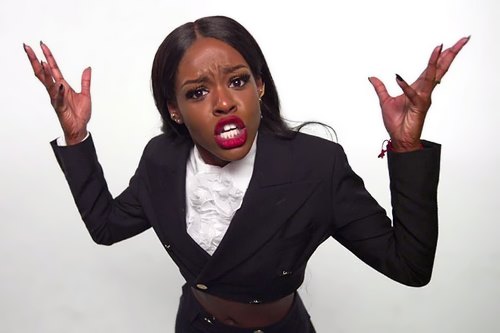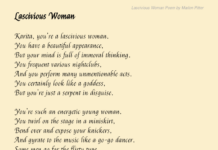Azealia Banks, the meritorious yet controversial figure in the music industry, has increasingly been the subject of discussions surrounding her mental health and public behavior. In light of notable parallels to the well-documented struggles of Amanda Bynes, an actress who experienced a very public breakdown, a critical examination of Banks’ experiences within the entertainment world becomes imperative. This article delves into the tumultuous life of Azealia Banks, juxtaposing her journey with that of Bynes, while contemplating the societal implications of celebrity culture and mental health management.
Understanding the trajectory of Azealia Banks’ career introduces us to a multifaceted character whose artistic brilliance is frequently eclipsed by interpersonal scandals and erratic behavior. Emerging from the Harlem borough of New York City, Banks burst onto the music scene in 2011 with her viral hit “212.” The track showcased her prodigious talent, marked by razor-sharp lyrics and a unique melding of hip-hop and electronic sounds. However, along with her artistic prowess came an acute awareness of her status as a Black woman navigating a predominantly white industry, one rife with discrimination and bias. The influence of systemic racism and gendered expectations often translates into overwhelming pressures that artists like Banks face, contributing to their psychological decline.
The narrative takes a darker turn as the years unfold and personal struggles are compounded by public scrutiny. Banks has openly discussed her experiences with mental health issues, undergoing personal struggles that resonate with the kind of disintegration witnessed in fellow entertainer Amanda Bynes. Bynes, once a beloved child star, experienced a public unraveling that involved erratic behavior, legal troubles, and psychiatric intervention. This charismatic actress highlighted societal indifference toward mental health issues, raising pivotal discussions about the toll fame can take on vulnerable individuals.
A comprehensive investigation into Banks’ behavior reveals a pattern of disputes, both online and offline, that often overshadow her musical achievements. Whether it’s her controversial comments on social media platforms, her feuds with other artists, or her tumultuous relationships with industry executives, one cannot ignore the sustained pressure exerted on her psyche. Such conflicts, symptomatic of her internal struggles, make her journey akin to that of Amanda Bynes, suggesting that the commonality of fame has the potential to elicit profound psychological ramifications.
Moreover, underlying existential discontent plays a pivotal role in shaping both Banks’ and Bynes’ experiences. Azealia Banks’ artistic output frequently touches on themes of identity, racism, and gender, reflecting the complexities of her existence in a world that is often less than welcoming. These artistic expressions serve as a cathartic outlet, yet they often invite criticism that exacerbates her already precarious emotional state. Bynes too, in her opulent yet confining celebrity life, articulated an intricate relationship with her identity, grappling with public perception and personal self-worth.
Exploring the influence of social media on both entertainers raises questions about its potential duality. For Azealia Banks, platforms like Twitter and Instagram serve as both a stage for her artistry and a crucible for public dissection. The immediacy of digital communication provides a sense of connection but can also lead to violent backlash, further destabilizing an already fragile mental state. Bynes, before her mental health struggles became apparent, similarly used these platforms to communicate with her audience, only to find herself ensnared in a tumultuous web of sensationalism and misunderstanding. Both artists exemplify how the permanence of online actions can haunt one’s narrative, leading to moments of crisis.
The ramifications of fame, especially juxtaposed with mental health complications, provokes a larger discourse on accountability. Both Azealia Banks and Amanda Bynes have confronted a media landscape that often prioritizes sensationalist narratives over nuanced understanding. In the case of Banks, her racially charged tweets and public altercations with various celebrities have frequently overshadowed meaningful conversation about her artistry and personal struggles. Similarly, Bynes’ outbursts and damaging choices were reduced to mere tabloid fodder, ignoring the potential help and understanding she required. The media’s role in propagating these issues raises critical inquiries about the responsibility of storytellers to engage with mental health narratives with the seriousness they warrant.
Furthermore, societal perceptions of mental illness often compel individuals to bear the weight of stigma. Azealia Banks has often recounted her battles with anxiety and depression, but societal norms can inhibit comprehensive understanding and acceptance of her experiences. The parallels with Amanda Bynes, who faced similar dismissals and judgments, amplify the urgent need for dismantling harmful stereotypes surrounding mental health. The importance of fostering open dialogues, free from the shackles of stigmatization, cannot be overstated; this dialogue can pave the way for healing and understanding, both for those affected and society at large.
On a more hopeful note, recent developments in both Banks’ and Bynes’ lives suggest the potential for recovery and personal growth. Azealia Banks has continued to create and vocalize her unique style, even as she navigates the turbulent waters of public opinion. There are signs of introspection in her recent works and public statements, indicating a desire for understanding and compassion. Similarly, Amanda Bynes has depicted her journey towards recovery, showcasing the possibility of rehabilitation and the re-establishment of her identity beyond the constraints of past behaviors. Both narratives signal a broader message: that recovery is not linear and that hope is an indispensable element in the healing process.
In conclusion, the stories of Azealia Banks and Amanda Bynes intertwine in their complexities and vulnerabilities, each illuminating critical dimensions of the human experience in the limelight. The entertainment industry, while a platform for talent, can exacerbate personal struggles under the glare of public attention. As society continues to grapple with issues of mental health, it becomes essential to foster environments wherein individuals can seek help without fear of judgment. The narratives of Banks and Bynes serve as poignant reminders of the fragility of the human condition, drawing attention to the necessity of empathy and understanding within the discourse of celebrity culture. Ultimately, the importance of addressing mental health with dignity and respect is paramount, transcending the boundaries of fame and instead fostering a sense of community for those grappling with similar battles.





























